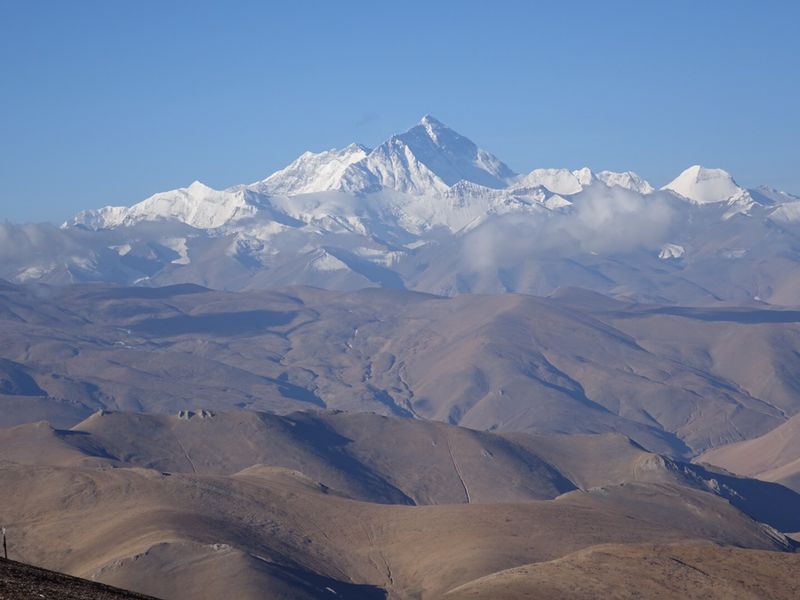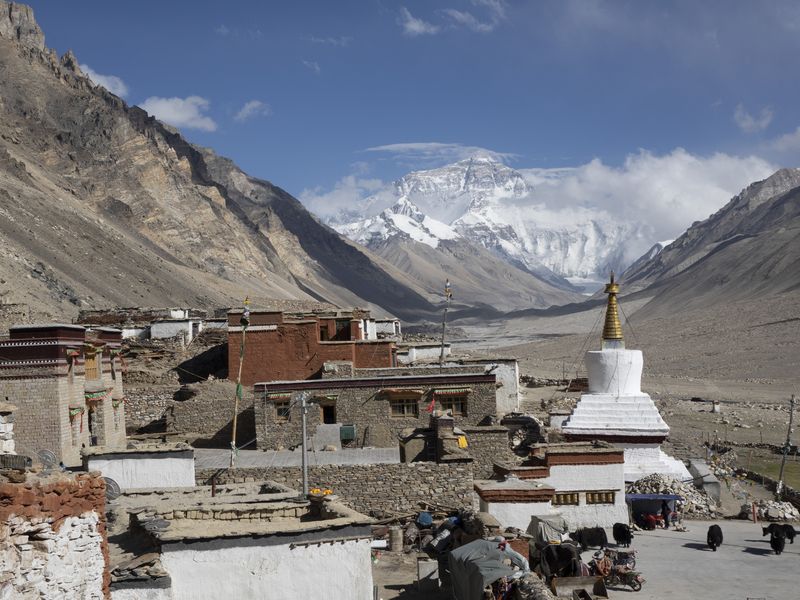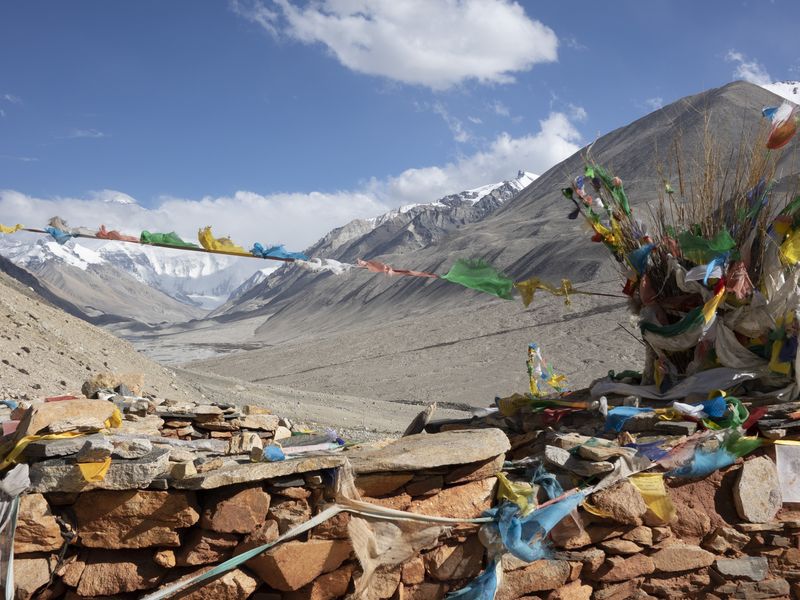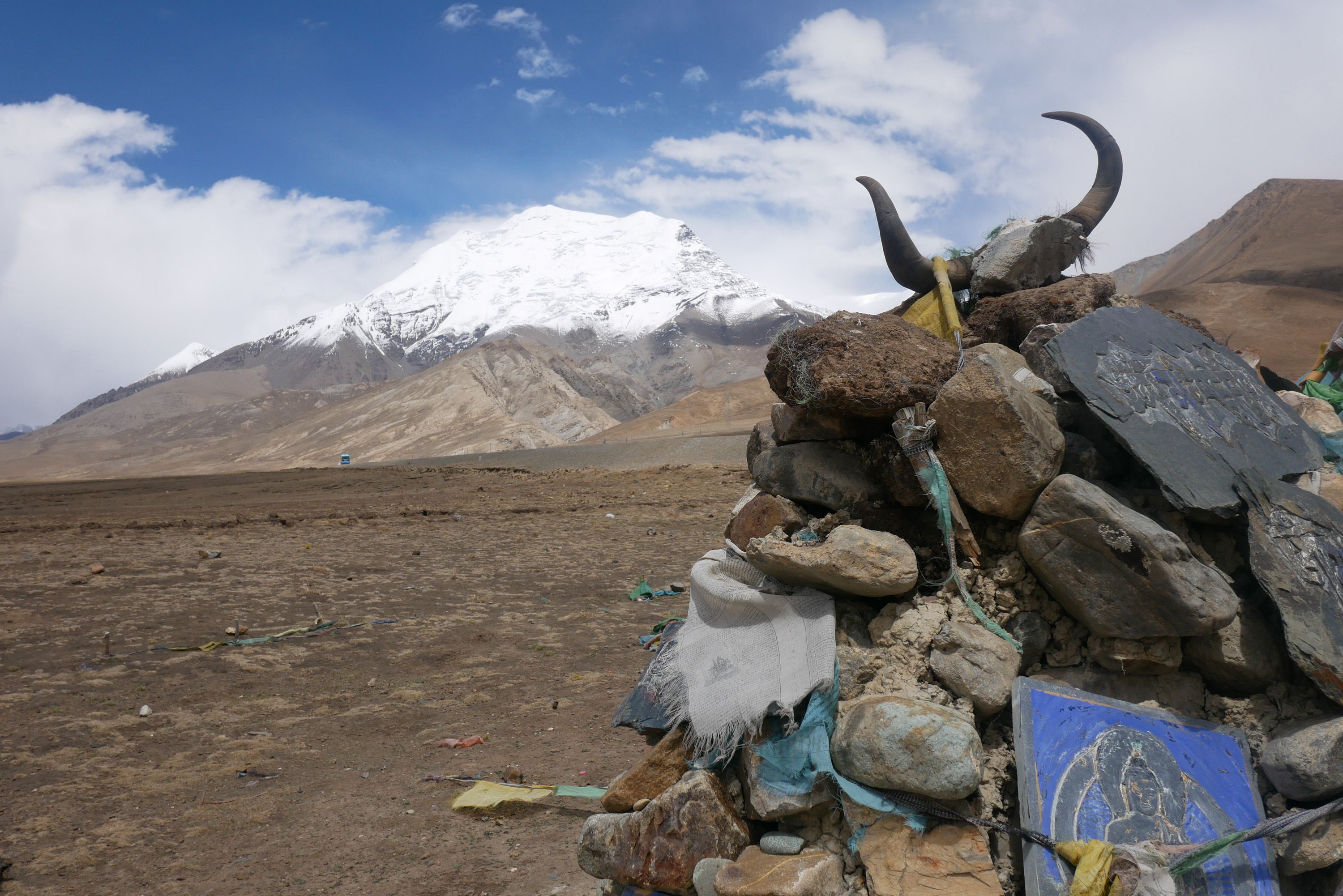Qomolangma (Everest) NP
Everest National Park (Qomolangma National Nature Reserve) contains four of the six highest peaks in the world. It runs along the border with Nepal, from where most ascents begin. The Tibetan side commands views of Everest’s formidable North Face, which is utterly mesmerising. Most visitors are here just to soak up the stunning panoramas, which are best appreciated during the climbing seasons of spring and autumn when the mountaintop isn’t obscured by clouds. Whenever you visit, however, the sheer scale of the landscape will take your breath away. This is one of those rare destinations that never fails to surpass expectations.
Three things to do in Qomolangma National Park
Obviously there's a lot more, this is just to get you started...
The mountain
This region forms the world’s highest National Park. Five of the mountains have altitudes over 8,000 metres, while Mount Everest herself stands at just under 8,849 metres. The journey to Everest, also known as Qomolangma, takes you through the arid Rongbuk Valley, formed by a massive glacier that climbers must cross to reach the Advanced Base Camp. It’s an unforgettable journey, carving through the mountains with astonishing vistas around every bend. At the northern end of the valley stands the famous Rongbuk Monastery, where visitors and climbers can stay overnight. However, relatively few climbers begin their ascent from the Tibetan side, despite it being considered the easiest approach with the best weather.

Rongbuk Monastery
The Rongbuk Monastery was founded in 1902 by the Lama Zatul Rinpoche, who also gave the famous sherpa Tenzing Norgay his name. Largely rebuilt since it was devastated during the Cultural Revolution, the monastery casts a modest, peaceful silhouette against the bare mountainside. The surrounding hills are peppered with ancient meditation caves, and the winding pathways are engraved with prayers and religious symbols. The intrepid can pause here before undertaking the five mile trek to base camp. Even if you’re not staying overnight at the welcoming monastery, it’s well worth pausing for a while to appreciate the unbeatable view of the mountain, with fluttering prayer flags and gold-tipped chorten shrine in the foreground.

In the shadow of Qomolangma
Within this sparsely populated landscape is one small settlement: Shegar, or New Tingri, often used by climbers as a stopover before they embark upon the trek to base camp. The wider reserve consists of dense, undeveloped forest where rare snow leopards prowl, along with deep valleys and occasional hot springs. Geologists frequently explore the different rock formations which make up the reserve’s hills’ varied colourscape: a tempting proposition for photographers. You can also trek from Old Tingri, further to the south, which takes between three and four days. Along the way, you’ll get a superb view of Cho Oyu (Turquoise Goddess), which is the sixth highest mountain in the world.


